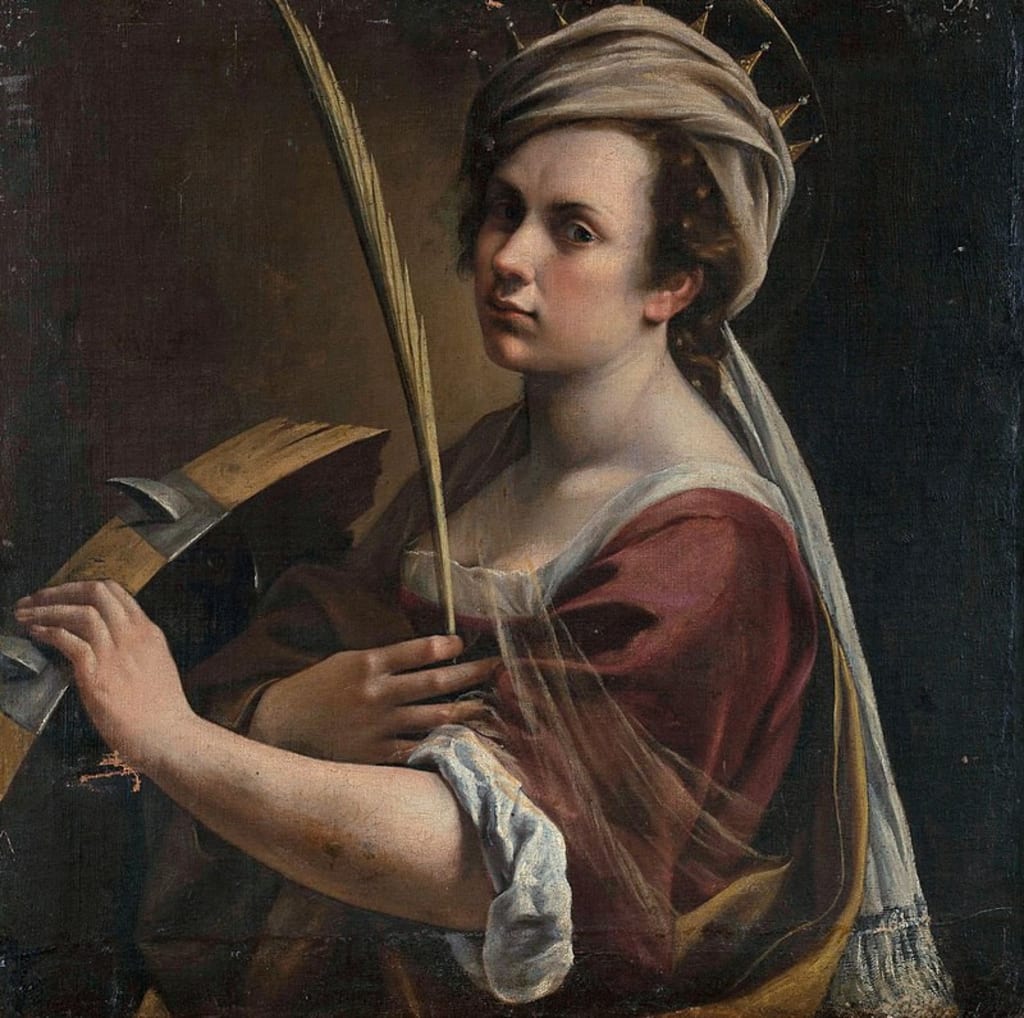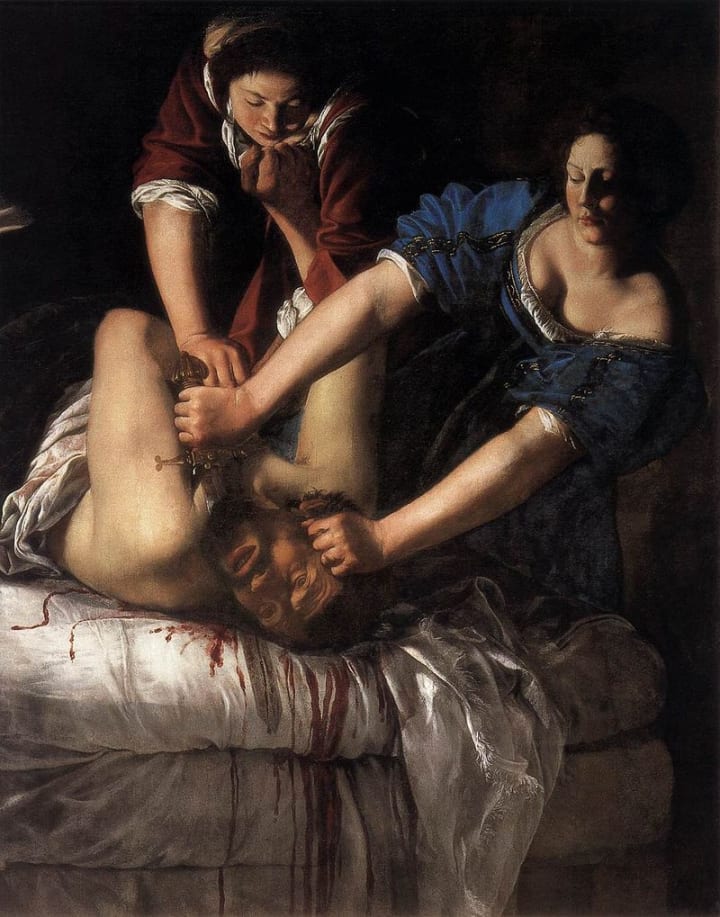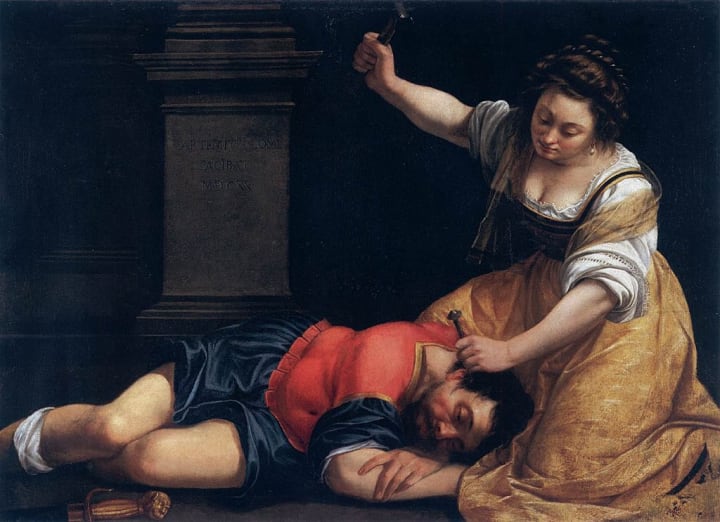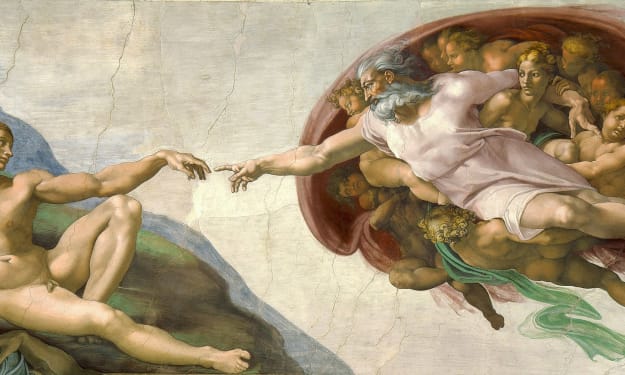The Female Painter Who Fought Patriarchy Through Her Paintings
The valiant life of Artemisia Gentileschi

Artemisia Gentileschi was one of the rare female 17th-century Baroque painters in the male-dominated art world. Her art was overshadowed for a very long time as she was raped by a famous artist Agostino Tassi when she was young.
During the time when women's voices were unheard, she had to fight for her own life. She suffered and had to prove her accusations towards the senior painter Tassi who was protected by the patriarchal Church because of his art. Despite all these hurdles, she took revenge for the injustice towards her through her paintings.
With words and images, she fought back against the male violence that dominated her world.
It was only in the 20th and 21st centuries, the art historians and scholars recognized her as one of the most progressive painters of her era.
The early life of Artemisia Gentileschi
Gentileschi was born in Rome and was the eldest child of the Tuscan painter Orazio Gentileschi. Her father's art style was immensely influenced by the maverick Baroque painter Caravaggio. And, so she started portraying drama and naturalism in her art too. During the era when women lived a subdued and domestic life, Gentileschi started learning complex skills to paint professionally.
Gentileschi's rape by Tassi
Gentileschi's father hired Tassi to gave his daughter art lessons. But Tassi tricked and raped her at the tender age of 17. Initially, Tassi assured her that they would get married but later he declined.
Gentileschi filed a case against him after 9 months of the incident and had to suffer torturous court trials that lasted for more than seven months. The fact that the transcript of the court case survived discloses the courage and fighting spirit of Gentileschi.
Tassi tricked his way into her room and started making unwanted offers of sex, she testified. "He then threw me on to the edge of the bed, pushing me with a hand on my breast, and he put a knee between my thighs to prevent me from closing them. Lifting my clothes, he placed a hand with a handkerchief on my mouth to keep me from screaming."
Her case became public and she was subjected to a gynecological exam. She incessantly had to verify her accusations against Tassi. Though she won the case, Tassi was never sentenced. He was protected by the Pope because of his art.
But the rape had a long-lasting effect on Artemisia. She portrayed cathartic images against men by embedding biblical figures and mythological females in her paintings.
How Gentileschi used her art to get the justice she never received
Susanna and the Elders

Susanna and the Elders was one of her earliest paintings painted in 1610. The painting depicted a biblical figure, Susanna who was spied upon by two elderly men while she went for a bath. The drama, agony of women, and nakedness portrayed in this picture made her art noticeable.
Art historians pondered how Gentileschi could paint female nakedness at such a young age and speculated whether she had studied female anatomy or used a model of her father's work studio.
Judith Slaying Holofernes

Judith Slaying Holofernes is considered one of her iconic artworks. This painting depicted the biblical story of Judith beheading Holofernes using a sharp dagger and blood spurted all around. She painted this just after her actual rape and art historians cited it as an act of visual revenge towards her oppression. As an ardent follower of Caravaggio, she made use of chiaroscuro in the painting.
Jael and Sisera

Jael and Sisera was another painting depicting her visual revenge using a biblical narrative. It depicted the moment in which Jael is about to kill Sisera, a defeated Canaanite general making use of a tent peg. Gentileschi placed her signature within the arc of the hammer's swing to let us interpret the main protagonist of the story.
Conclusion

Gentileschi's art became so famous that she was invited by Charles I to England in 1638. She painted the Self-Portrait as the Allegory of Painting. This depicted herself as a strong and powerful woman and brought into limelight the insights of a woman performing a rare skill (painting) in that era.
The trauma of Gentileschi's rape and the trial always haunted her art. Her paintings were considered cathartic because these were the medium to get her the justice she never received.
Yet she was not crushed by her personal pain and became one of the most famous artists in Europe. She became the epitome of feminism long before the movement came into the picture.
About the Creator
Kamna Kirti
Art enthusiast. I engage with art at a deep level. I also share insights about entrepreneurship, founders & nascent technologies.
https://linktr.ee/kamnakirti






Comments
There are no comments for this story
Be the first to respond and start the conversation.